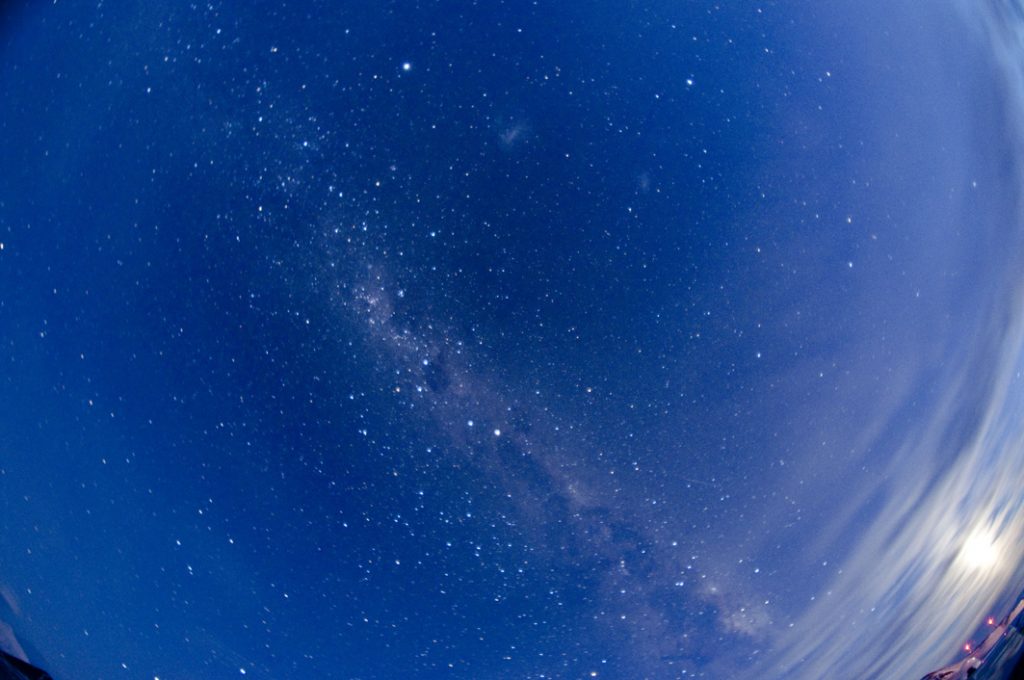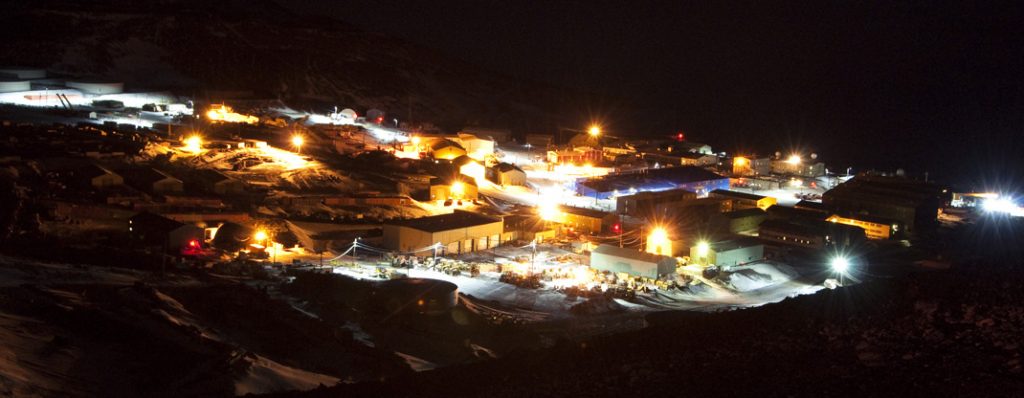Open water surrounding the Ross Island generated so many clouds. We ran into a few times of conditions II. In March, there was not even a single day with continuous 24 hours of clear skies. My tries to run the lidar were frustrated by the cloudy sky and quick weather change. But eventually I managed to collect more than 50 hours of lidar data in March.
As the summer people left, the population at Mc town went down significantly. It shrunk from 1000 to 151. The last flight took off on March 5, 2011. On that day, we had a traditional champagne toast to celebrate the moment. Since it was a work day, most people were on duty. Only around 30 people attended the toast. Bill Henriksen, the NSF Station Manager, gave a short speech. Winter season began formally. For the senior winter folks as well as the fresh winter people, it was a memorial moment. For me, it’s a long way down. When the airbus flew over our heads, I lift a glass of champagne, murmured, “Toast, Winter, Lidar!”
On March 18, 2011, I ran into the first problem that scared me. It was at midnight, and I saw the stars were beginning to show up in the north sky. I knew it could be the only chance of clear sky for the next few days, so I rushed to Arrival Heights. Before turning on everything, I decided to run the system with nighttime configuration, and it would be the first time I tried to switch the daytime configuration to nighttime configuration by myself, while the whole system was running. Unfortunately, I encountered a series of problems. A pulse-prohibition box couldn’t be powered on. I fixed the problem quickly after some diagnosis. However, it turned out this was just the start of troubles.
When everything was ready and the system began to take data, some weird phenomena drew my attention. First, I noticed that the computer couldn’t communicate with SR430 on the 372-nm channel. Soon, I found the PMT current of the 372-nm channel was unstable. These two points really scared me as they could mean very severe problems. Restarting the PMT, computer and SR 430 didn’t help. Finally, I had to turn off the 372-nm channel, and run the 374-nm channel for data. Every step I had done was within the standard procedure, and I realized the problems might have reached beyond my capability.
Several hours later, I got in touch with Dr. Chu and other members in our group. Dr. Chu helped me to analyze the issues comprehensively, and she instructed me on how to diagnose and solve these problems carefully. Finally, we solved the problem nicely, and everything went back to normal. I feel so grateful to my group for their help and encouragement, especially Dr. Chu.
Finally we can see the nighttime sky after several months of 24-hour daylight. The night sky at McMurdo is so beautiful, and the station in the night looks so different from its summer appearance.






